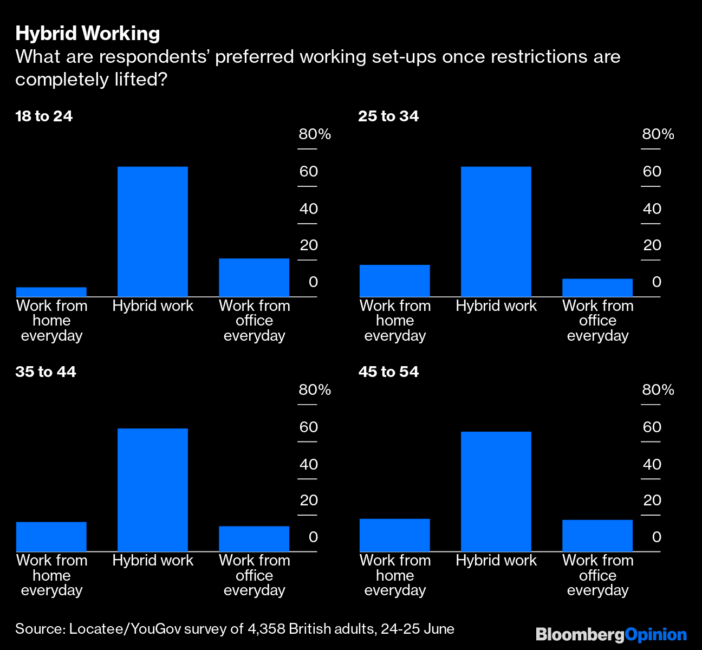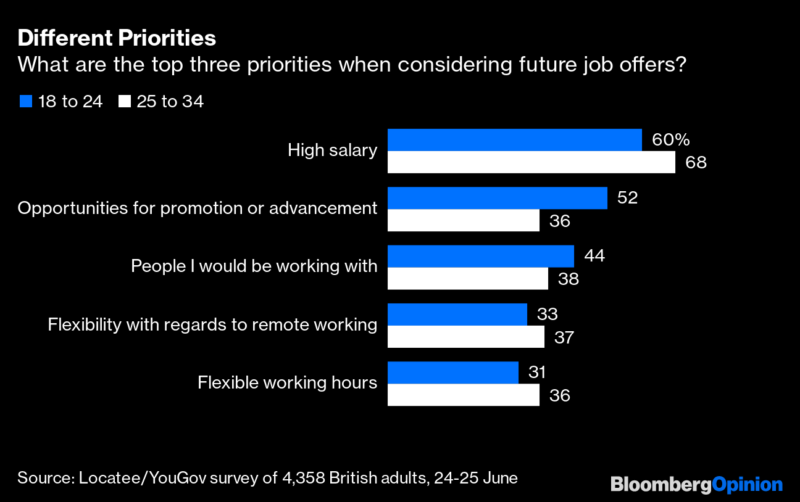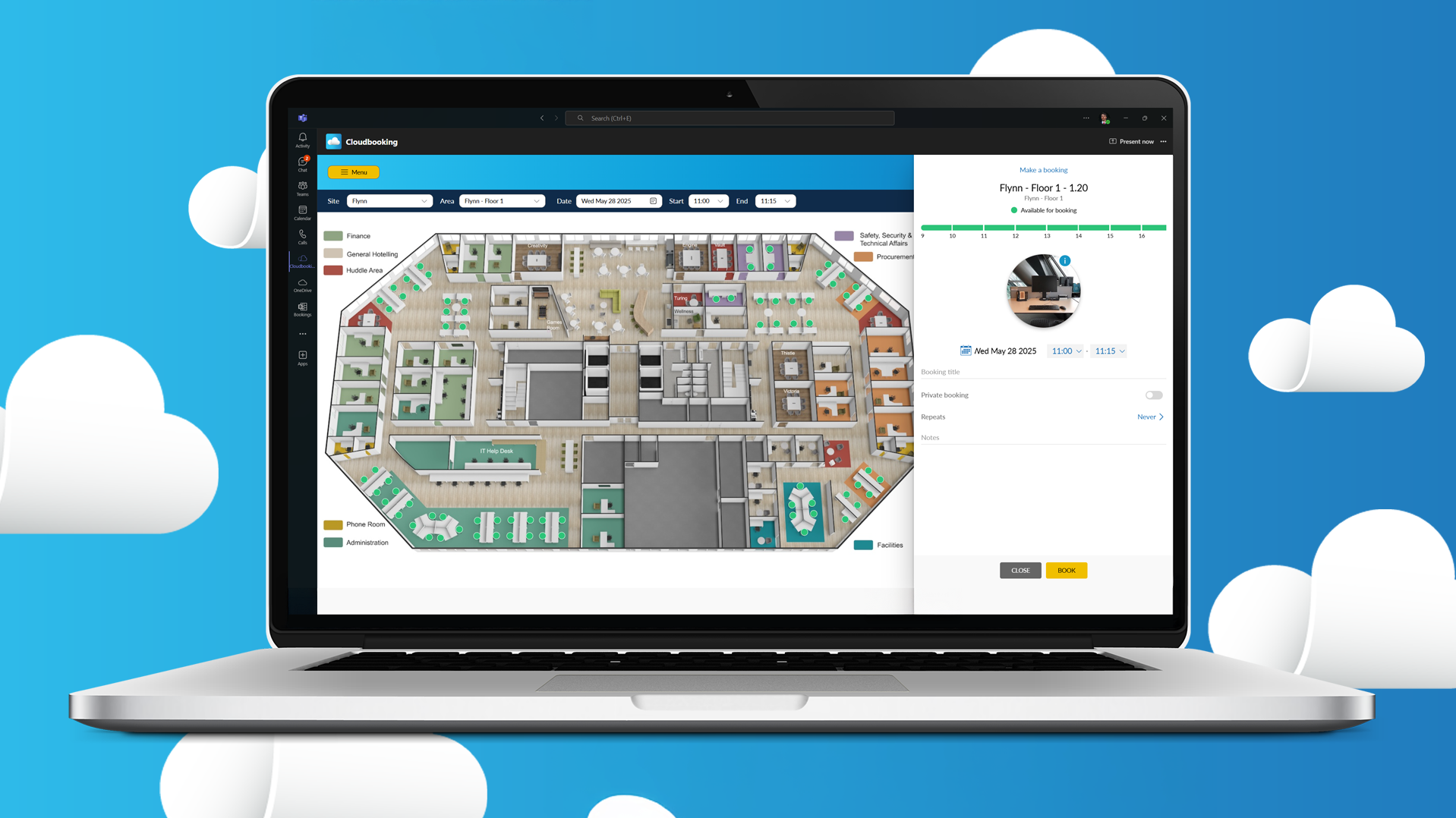
This article discusses how employers can protect their workforce from the economic downturn and build a recession-proof workplace.
The world economy reeling. Soaring inflation, a brewing mortgage and energy price crisis in the UK, and higher business costs — are creating the perfect storm for an economic recession.
The good news, according to Morgan Stanley’s Lisa Shalett, is that if a recession does come to pass, the damage is likely to be short and shallow — similar to inflation-triggered downturns of the past. The bad news is that many businesses have already taken a beating, and things are set to get worse before they get better.
Conditions are tough for everyone right now, but we know this is an opportunity for businesses to build and grow. So, if you want to create a recession-proof workplace and thrive, here are a few things you should consider.
Why employers should recession-proof their workplace
While no business wants a recession, it can be an opportunity for employers to demonstrate their commitment to caring for their workers, bolster their employer value proposition (EVP) and even gain a competitive advantage over their competitors.
That being said, below are a few strategies you can use to build a recession-proof workplace in 2022 and beyond.
How to build a recession-proof workplace
1. Assess your office real estate needs
Rents in the UK’s “Big 6” office markets — Birmingham, Bristol, Edinburgh, Glasgow, Leeds and Manchester — have continually risen since 2012, according to data from real estate consultancy Lambert Smith Hampton. Unsurprisingly, the core of Central London is by far the country’s most expensive office location, with the average workstation in Mayfair costing an average of £18,910 per workstation annually.

All this is to say that when it comes to low-hanging fruits for cost reduction, your office rent is where you should first look for areas of potential optimisation. Start by assessing whether your organisation can reduce your office real estate without (and this is important) reducing your staff headcount.
Cloudbooking Tip: Not sure where to start? Consider these questions:
- Do you need the floor area your offices currently occupy?
- Could you get by with a smaller footprint?
- What is the fastest way to get more out of my existing office footprint?
Fortunately, the successful shift to remote work over the last two years proves that people don’t have to be in the office to be productive. This opens up an opportunity to shift to a hybrid working model, allowing you to reduce your office real estate costs without downsizing your staff.
Related Reading: The Hybrid Working Model: What Is It and Can It Work?
Fortune reports that 83% of executives believe hybrid working will drive cost savings, while 60% said they plan to reduce their office space by at least half. When it comes to Fortune 500 firms, look no further than JP Morgan Chase, whose CEO Jamie Dimon announced last year that they would embrace a combination of in-person and remote work to “significantly reduce our need for real estate.” Dimon isn’t alone — 74% of Fortune 500 CEOs plan to reduce their office space because of hybrid working.
Cloudbooking’s Desk Booking Platform
A desk booking system will enable you to create dynamic schedules for your workers, allowing them to choose when to come to the office and book workspaces depending on their needs. This setup, also known as desk hoteling, has been around for years.
In 1993, Ernst & Young (EY) downsized its Orange County offices to reduce costs, bringing occupancy from four offices down to just one. They then turned to office hoteling to shuffle workers in and out of their smaller premises, slashing office space costs by 35% to 40%.
Related Reading: 7 Answers to FAQs About Office Hoteling
2. Make your workspaces more efficient
The next step is to think about how to use your office space more efficiently. Are there any areas that you could use for other work activities? Can your existing workspaces safely accommodate desk sharing? If so, what tools and solutions do you need to make this setup work?
For better or worse, the pandemic redefined the concept and value of the office. According to a PwC survey of 133 executives and 1,200 US workers, employees believe the office is a space for collaboration and face-to-face contact with colleagues. In contrast, employers saw it as a place for increasing productivity.
Source: PwC
This disconnect between workers and employers could also mean that the traditional workplace may no longer fit the needs of the modern workforce.
Cloudbooking Tip: Cloudbooking is a workspace management tool that lets you capture data on how workers use and interact with individual workspaces and facilities in your office. Our solution enables you to generate insights on office occupancy, informing you how best to reduce your office footprint while maintaining an optimal level of worker capacity.
For example, Cloudbooking can interface with IoT-enabled sensors in your workplace to track foot traffic and identify the busiest days of the week. This helps you plan the best days of the week for remote work and in-office work.
Wired reports that during the pandemic, the busiest days for UK offices were Thursday, Wednesday and Tuesday (in that order). Having your own data to confirm this observation can help you designate remote working days for focused “deep work” and slower days for facetime with other workers. You might use this data to transition to a four-day work week or TWAT working arrangement.
Related Reading: 6 Reasons to Have a T.W.A.T (Tuesday, Wednesday, and Thursday) Team
Don’t forget about the little things. Making sure your office furniture is arranged ergonomically can make a big difference to employee productivity and satisfaction — which, in turn, improves retention.
3. Go all in on strategic hybrid working
In 2021, Cloudbooking and YouGov surveyed US and UK employees and found that 64% of workers prefer working on a hybrid basis. Our census found that 55% of workers want a mix of home-based and in-office work, while 9% want to shuttle back and forth between home, the office, and approved public spaces.
Related Reading: The Hybrid Workplace — An Employee Census
While the trajectory of hybrid work seems clear, employers should think strategically to maximise hybrid work efficiency and ensure no one feels alienated from the workforce.
Cloudbooking Tip: If you haven’t already, develop a hybrid working policy — a written document that outlines details such as:
- Where, when, and how employees work
- The roles and types of employees who are allowed to go hybrid
- Best practices that every employee should follow, particularly outside the office
- The legal rights of employees when they work remotely.
Related Reading: How to Write a Hybrid Working Policy: 9 Things to Include
Establishing the ground rules creates a cohesive work system where employees have the flexibility to split their time between remote and in-office work, and employers can still maintain collaboration and build a strong company culture.
For instance, your policy can indicate that in-office days should be about meetings and collaborative work — activities in which the physical presence of people leads to better outcomes.
From an operational perspective, a hybrid working policy should also identify procedures that increase your office’s real estate efficiency. For instance, shifting to office hoteling can eliminate the need to have one desk for one employee; instead, you have multiple workers scheduling their usage of shared workstations, leading to reduced workspace costs.
The key takeaway here is simple: During a crisis, it’s not enough to shift to just hybrid work. Hybrid working needs to have purpose — clear objectives and clear guidelines to drive desired outcomes.
4. Plan around the needs of Gen Z talent
The pandemic has been particularly disruptive for Gen Z workers (ages 18 to 25), whose entry into the workforce was marked by layoffs and sudden work-from-home arrangements. But they might be your biggest asset during an economic downturn, considering how many Gen Z workers are eager to join the workforce after being the worst hit by global unemployment.
Forecasted to make up 27% of the workforce by 2025, Gen Z-ers have unique perspectives shaped by the turbulent formative years of their careers. For example, Gen Z, along with millennials, are the most likely (70%) to return to the office — albeit on a hybrid working basis — according to a 2021 Locatee and YouGov survey.
In other words, young adults still see value in the office.

Gen Z workers’ career priorities are a significant factor behind these attitudes. The Locatee/YouGov survey also found that 48% of Gen Z-ers believe frequently working remotely may negatively affect their career progression and promotion chances.

These concerns align with the findings of an Axios survey showing that 66% of young workers prefer receiving in-person feedback from managers. The takeaway is simple: Gen Z workers understand the value of remote work but also recognise that the office fulfils important social and career development aspects of work.
Cloudbooking Tip: Consider aligning your workplace with the principles of activity-based working (ABW). This concept takes a human-centric approach to work in which employees have the autonomy to choose from multiple environments depending on the kind of work they’re doing. Dutch consultant and author Erik Veldhoen pioneered the concept in his 1994 book, The Demise of the Office.
Activity-based working also emphasises the importance of collaboration. Instead of dedicated cubicles and individual offices that take up precious floor space, ABW-enabled offices feature open floorplans and shared collaborative spaces that engender teamwork and discussion.
Related Reading: The Manager’s Guide to Activity-Based Working (ABW) in the Hybrid Era
These offices will be instrumental in attracting and retaining Gen Z talent, who still want a career with rewarding pay, of course, but also want opportunities for career development and a place where they can be part of a community.

5. Prioritise employee engagement in difficult times
During uncertain times, the last thing you want to do is allow employee engagement to be a casualty of your cost reduction efforts.
Engaged workers are the key to maintaining productivity and profitability during an economic downturn. Research by consulting firm Watson Wyatt revealed that high-commitment organisations (those with engaged and loyal employees) outperformed low-commitment companies by 47% in a 2000 study and by 200% in a 2002 study.
Cloudbooking Tip: There is no one-size-fits-all approach to keeping your employees engaged during times of uncertainty. But there are best practices you can follow to show your teams you’re looking out for them.
- First, keep your communication channels open and honest. Employees want to be kept in the loop about what’s happening in the organisation and how it might affect them. It’s also the right thing to do.
- Second, focus on creating a positive work environment. This means ensuring employees have the resources they need to do their jobs well and providing opportunities for development and growth.
- Finally, employers should do everything they can to support employee wellbeing. This includes offering flexible working arrangements where possible and providing access to mental health support if needed.
Over to you
When employers recession-proof their workplaces, they provide stability and security for their employees during difficult economic times. This can help bolster your employer value proposition (EVP) and make your organisation more attractive to potential employees. Recession-proofing measures can also help you save money on costs such as office rent, recruitment and training.
Follow the Cloudbooking blog to get more insights about building a recession-proof workplace through flexible work solutions. If you’re looking for a software solution to support desk booking and hybrid working in your workplace, get in touch with the Cloudbooking team. Our workspace management solutions are packed with features to help managers and employees maximise their use of shared office spaces. Contact our team to schedule an obligation-free demo.




